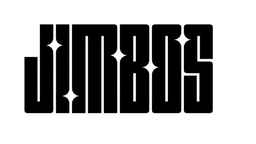Common Paint Correction Mistakes to Avoid
Paint correction can dramatically improve your car’s finish—but it can also go sideways if you’re not careful. Whether you're new to polishing or just want to tighten up your process, here are the most common paint correction mistakes to avoid—and how to get swirl-free, high-gloss results every time.
1. Skipping Proper Prep
You can't correct what you can't see—or what you're grinding into the paint. Failing to fully wash, clay, and decontaminate the surface can lead to:
- Polishing over embedded grit
- Micro-marring and swirl reintroduction
- Inconsistent finish
Fix: Use a high-foaming soap like The Super Soaper, clay the surface, and remove iron/fallout before polishing.
2. Using Too Much Pressure
More pressure doesn’t mean more correction—it usually means more heat, more swirls, and less clarity.
- Can burn edges or create holograms
- Fatigues pads and polisher faster
Fix: Let the pad and polish do the work. Moderate pressure and slow passes yield better results.
3. Working Too Fast
Paint correction isn’t a race. Rushing your arm speed means the abrasives don’t get a chance to break down or level the surface.
- Leads to poor correction and uneven finish
- Often requires a second pass anyway
Fix: Use a consistent, crosshatch pattern with slow, overlapping passes.
4. Using the Wrong Pad or Polish
Not every car needs a compound and heavy pad—and not every polish finishes well on soft paint.
- Too aggressive = micro-marring
- Too soft = no correction
Fix: Start with a test spot. Try a medium pad with Picture Perfect Polish and adjust up or down as needed.
5. Not Cleaning Pads During Use
As you polish, your pad loads up with spent polish, paint, and debris. If you don’t clean it, you’re just smearing that mess around.
- Causes streaks, haze, and uneven results
- Overheats and clogs pad pores
Fix: Clean your pad with compressed air or a brush every 1–2 panels. Swap to a fresh pad if needed.
6. Skipping the Final Wipe or Inspection
Just because it looks good under garage lighting doesn’t mean it’s swirl-free. Without a proper wipe-down and inspection, you might be sealing in haze or leftover oils.
Fix: Wipe with panel prep or IPA. Inspect under direct LED or sunlight before applying protection.
Pro Tip
One of the most overlooked mistakes: not understanding the paint system you're working on. Always approach each car as a unique job—because it is. What worked on one vehicle might not work on another.
Final Thoughts
Most paint correction mistakes come from rushing, guessing, or skipping key steps. Slow down, dial in your process, and let the tools do the work. With the right prep, pad, and polish—like Picture Perfect Polish—you’ll see better results, faster turnaround, and fewer callbacks.



